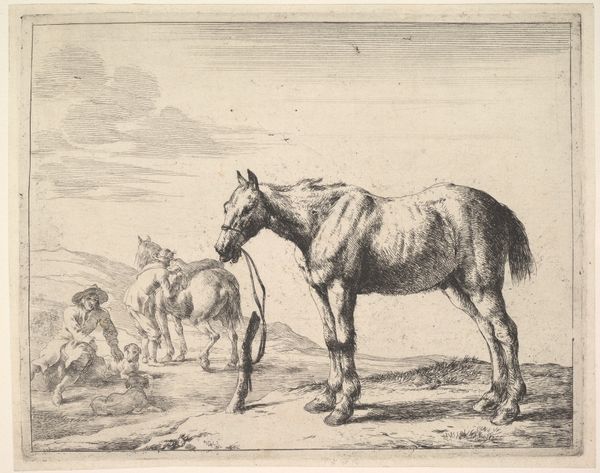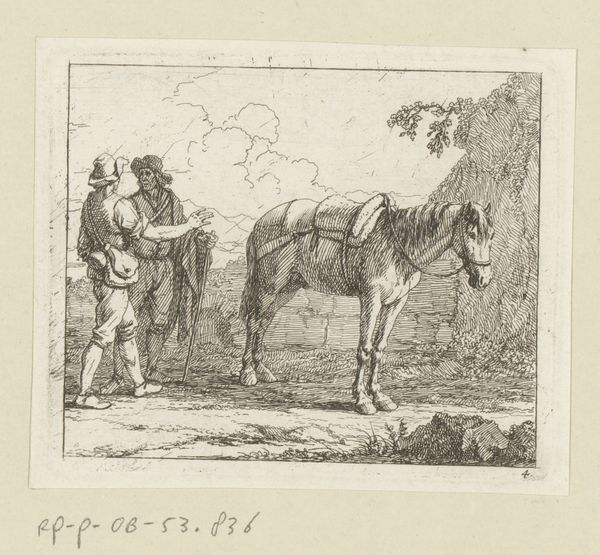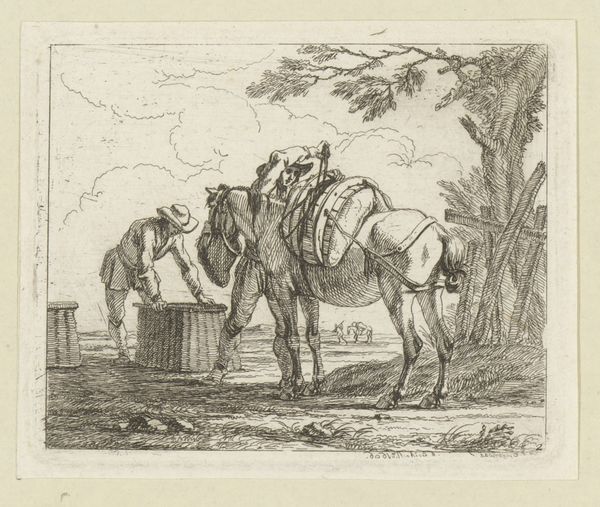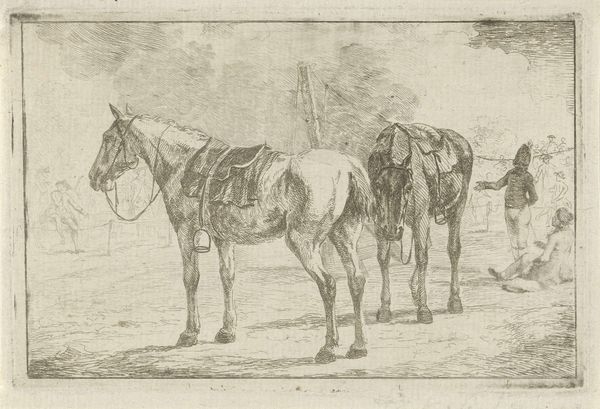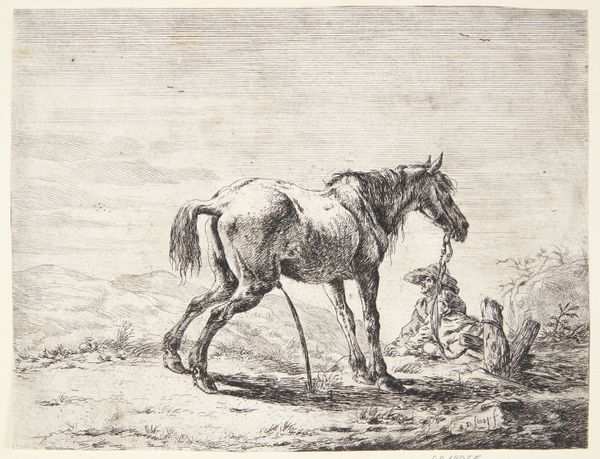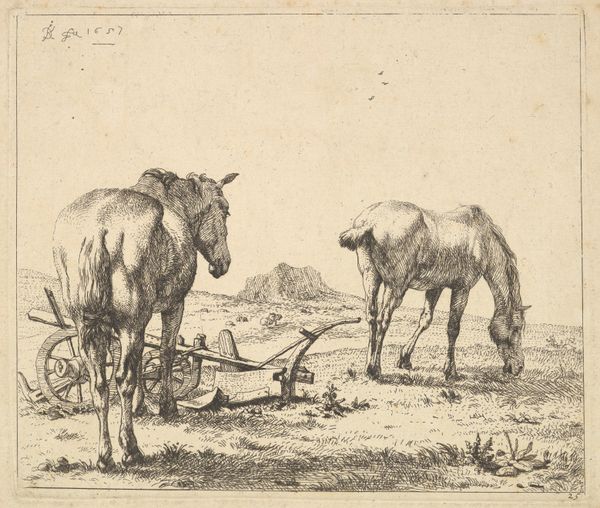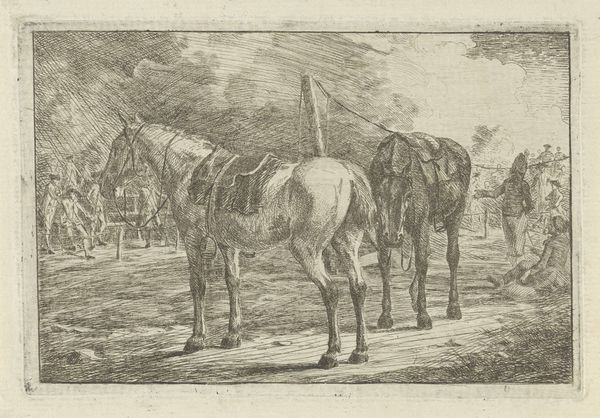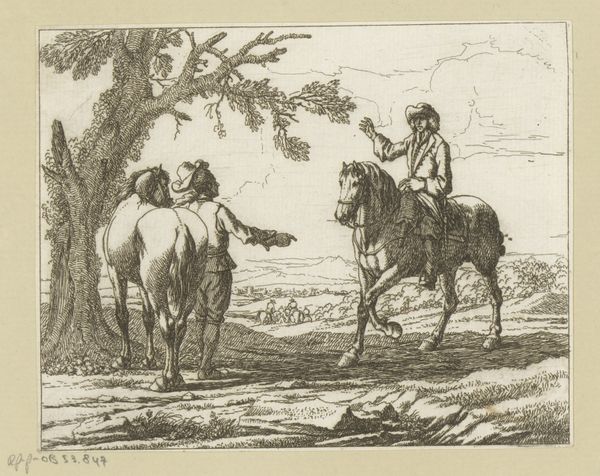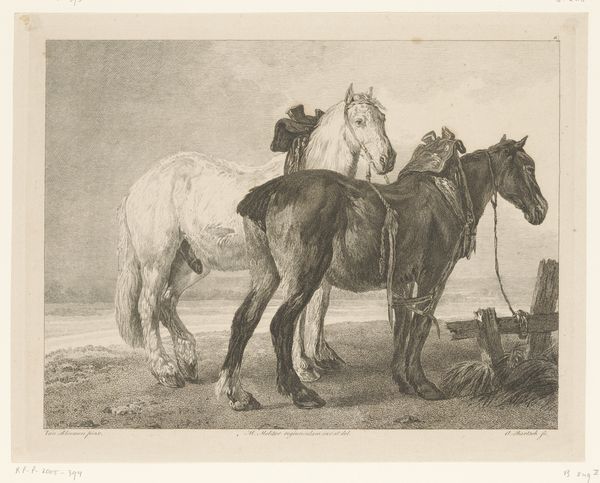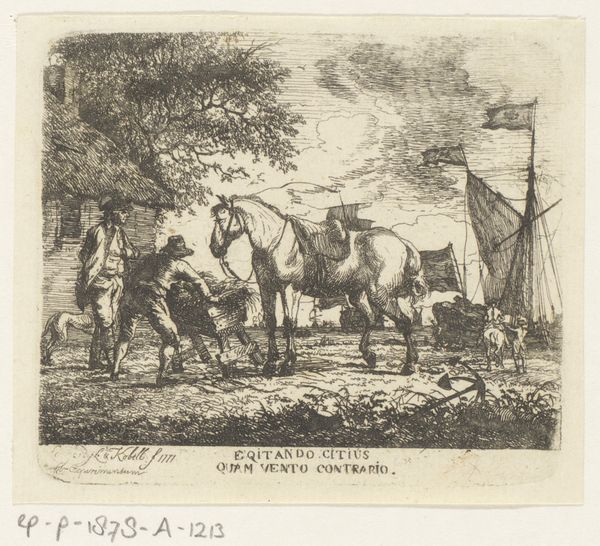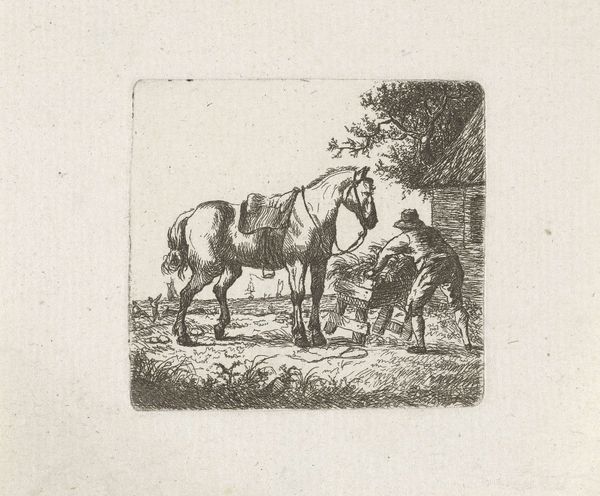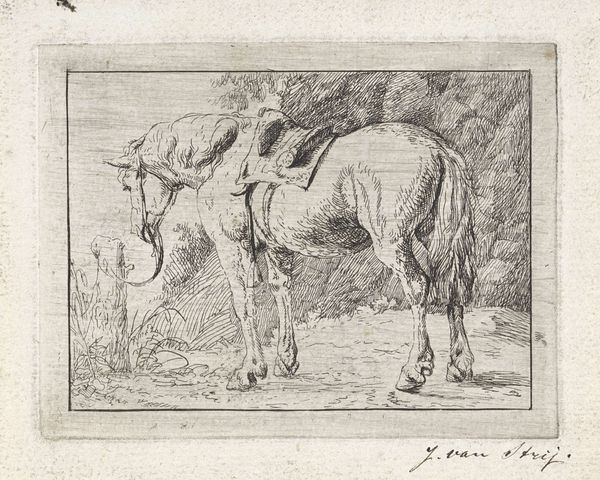
drawing, engraving
#
drawing
#
pen sketch
#
pencil sketch
#
landscape
#
figuration
#
pen-ink sketch
#
horse
#
sketchbook drawing
#
engraving
#
realism
Dimensions: height 93 mm, width 119 mm
Copyright: Rijks Museum: Open Domain
Editor: So, here we have "Weiland met twee paarden," or "Pasture with Two Horses," a drawing by Jan Karel Jacob de Jonge, dating from between 1843 and 1880. It’s rendered in engraving, and it feels quite rustic, almost like a quick sketch. What strikes me is how…unromanticized the horses seem. They’re not idealized steeds, just ordinary farm animals. What do you see in this piece? Curator: Well, you've hit on something important. It's precisely this unvarnished depiction that speaks volumes. Consider the context: in the 19th century, Realism emerged as a challenge to academic painting which often depicted highly stylized figures. De Jonge's work participates in this shift, focusing on the everyday. Notice the landscape itself—the somewhat unkempt fence, the working horses. How does that inform your understanding of the artist’s intent, perhaps? Editor: I guess it's a deliberate choice to represent the world as it is, not as some idealized version. So, these horses weren't symbols of wealth or status, just workers in a field. Were these images used politically? Curator: Precisely! Think about the rise of industrialization during this period. Representations of rural life and labor, even seemingly simple ones like this, became invested with new meanings. They could be seen as nostalgic reminders of a disappearing way of life, or even as subtle critiques of industrial society. How might displaying these images influence the rising middle class that visited the museums and galleries? Editor: It's almost a form of social commentary then. A quiet, agrarian pushback against urbanisation, viewed within gallery walls! It makes you consider where art, like this sketch, fits into a time of big changes. Curator: Exactly. And how the very act of exhibiting such a scene in a gallery transforms its meaning. Food for thought, indeed. Editor: This has opened up a completely different way for me to interpret seemingly simple artworks. Thank you!
Comments
No comments
Be the first to comment and join the conversation on the ultimate creative platform.
